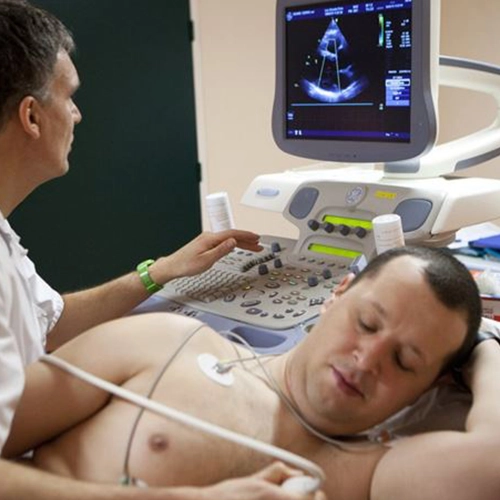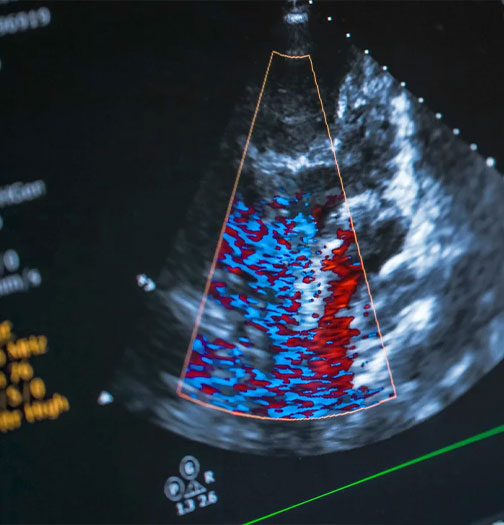ECHO
ECHO Scan
Echo scanning is a non-invasive medical imaging technique with many features and advantages. It uses high-frequency sound waves, provides real-time visualization, facilitates accurate diagnosis and monitors medical conditions. Echo scanning is versatile, can monitor cardiac function and detect abnormalities in organs , compared to other techniques. With continuous technological advances, echo scanning ensures safe procedures and high-quality images, emphasizing its indispensable role in modern healthcare
ECHO scan procedure
The echocardiogram (echo) scan is done by making the patient to lying down while a technician places electrodes on the chest to record the heart’s electrical activity. Then the Gel is applied to the chest, and a transducer is moved over the area, emitting sound waves to create images of the heart’s structure and function. Real-time images are displayed on a monitor, allowing assessment of the heart’s chambers, valves, and blood flow. Measurements such as ejection may be taken. After the scan, the gel is wiped off, and the patient can resume normal activities.

An echocardiogram, or echo, is a non-invasive test that uses sound waves to create detailed images of the heart’s structure and function. It provides valuable information about the heart’s chambers, valves, and blood flow patterns. Echocardiograms help diagnose various heart conditions, such as heart failure, valve disorders, and congenital heart defects. They are safe, painless, and do not involve radiation exposure, making them a valuable tool in cardiology for assessing and monitoring heart health.
Advantages
Echocardiogram (echo) scans offer several advantages
- Real-time Imaging
- Doppler Imaging
- Two-Dimensional Imaging
- Three-Dimensional Imaging
- Color Doppler Imaging
Overall, echo scans play a critical role in the diagnosis, management, and monitoring of various cardiac conditions, contributing to patient’s better outcome and improved cardiac health.


FAQ
How is an echo scan test performed?
During an echo scan test, a technician places a transducer device on the chest, which emits high-frequency sound waves. These sound waves bounce off the heart structures and are converted into images displayed on a monitor.
Is echo scan test safe?
Yes, echo scan test is considered safe and non-invasive. It does not involve radiation exposure, and there are no known risks associated with the procedure.
Can an echo scan test be performed on children?
Yes, an echo scan test can be performed on individuals of all ages, including children and infants. It is a valuable tool for diagnosing congenital heart defects and other pediatric heart conditions.
What does echo scan test diagnose?
The echo scan test helps diagnose various heart conditions, including heart valve disease, heart muscle disease (cardiomyopathy), congenital heart defects, fluid around the heart (pericardial effusion), and abnormal heart rhythms (arrhythmias).
What Facilities We Provided

Eye Care Services

Cardiology Services

